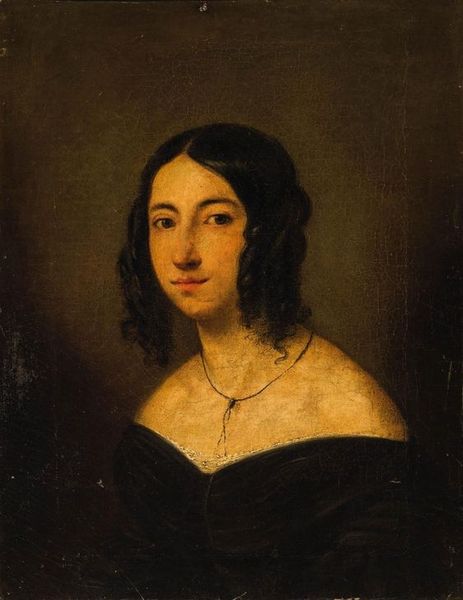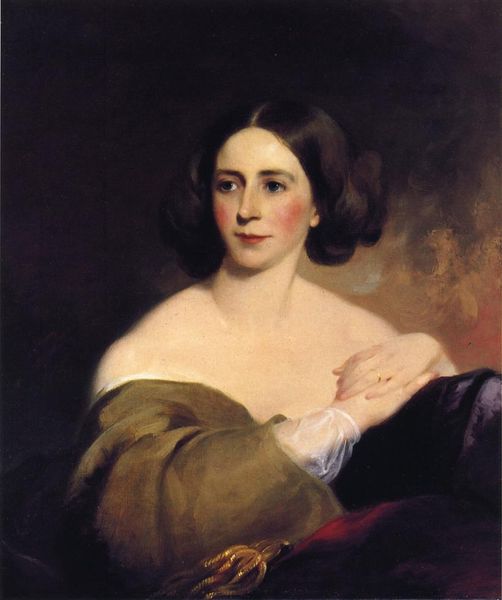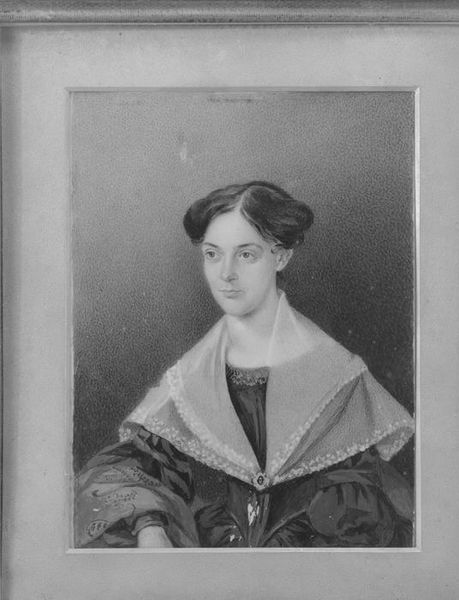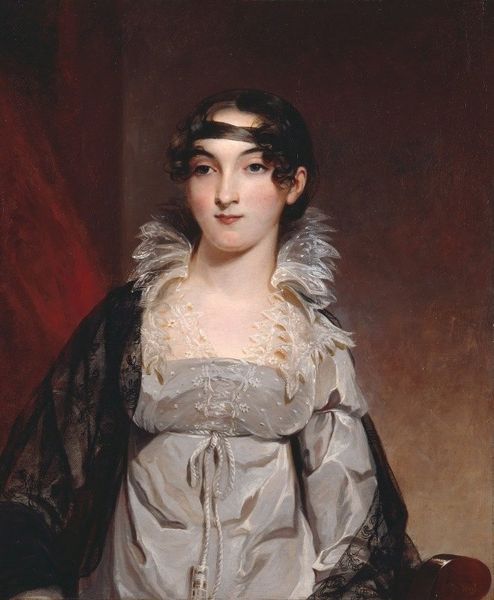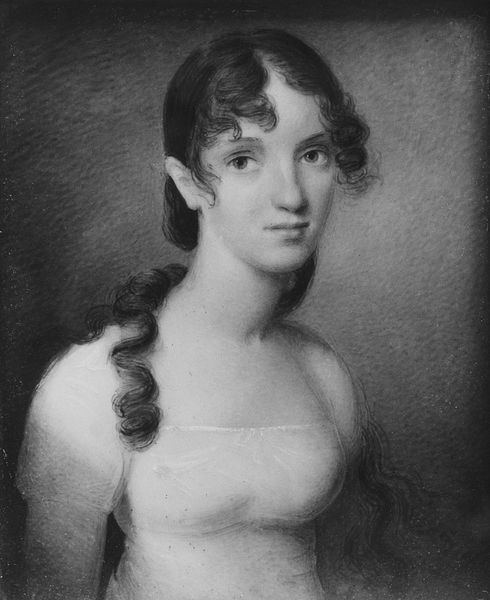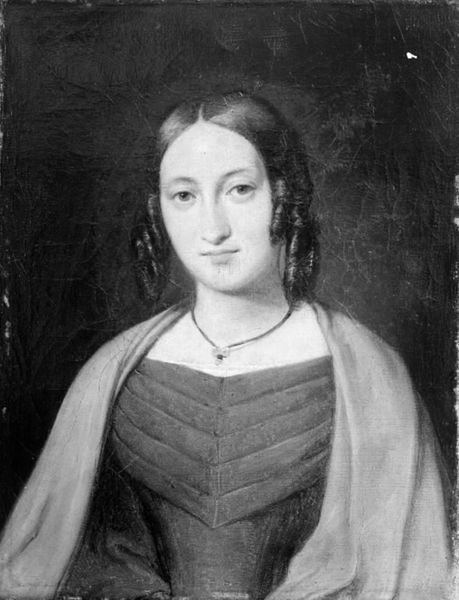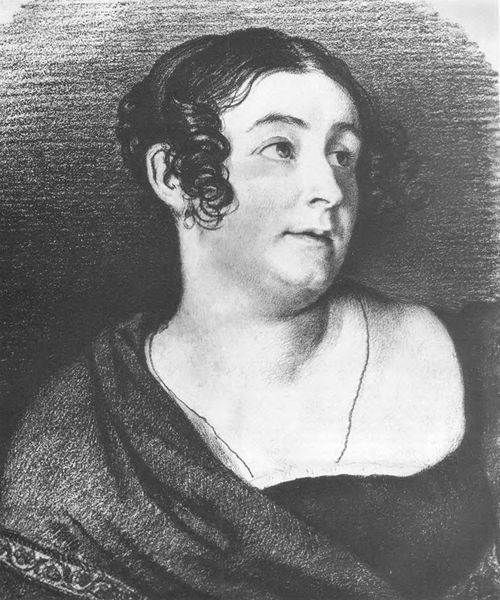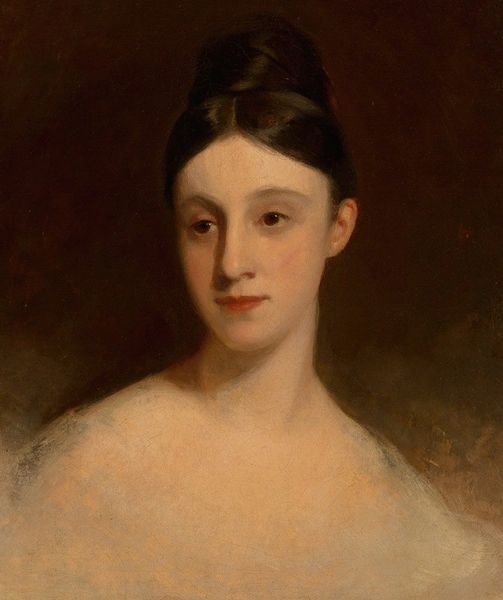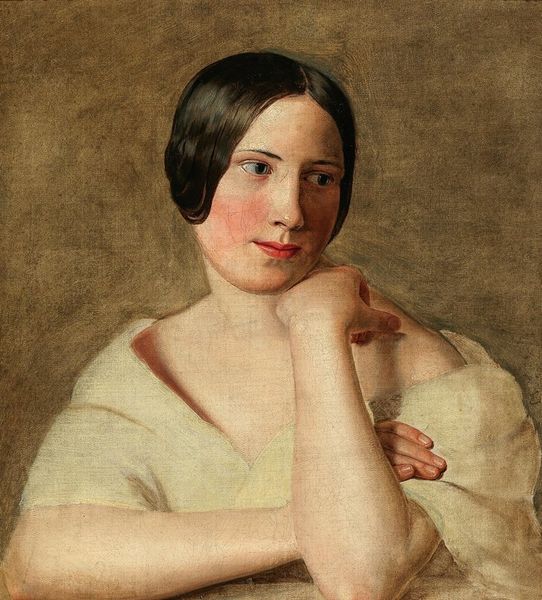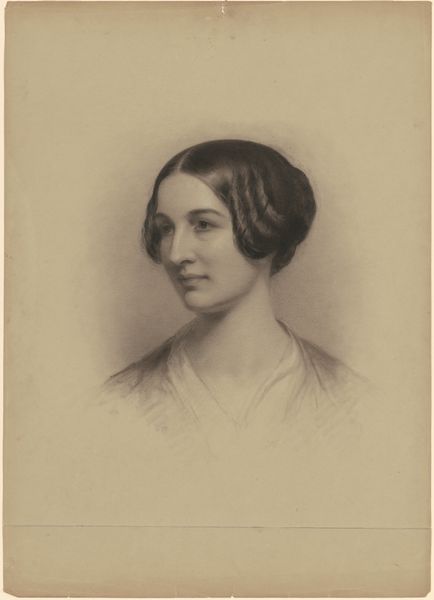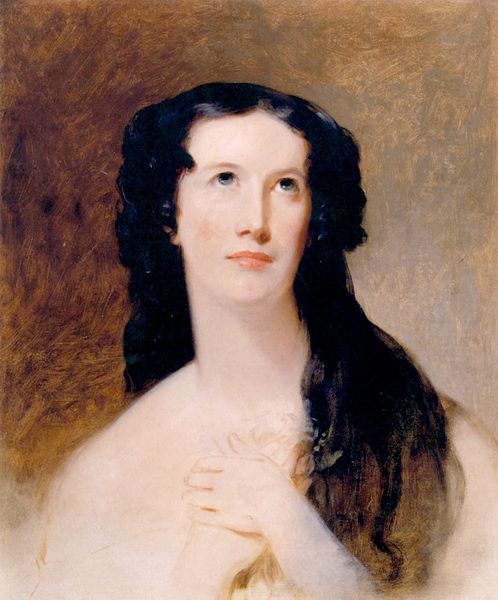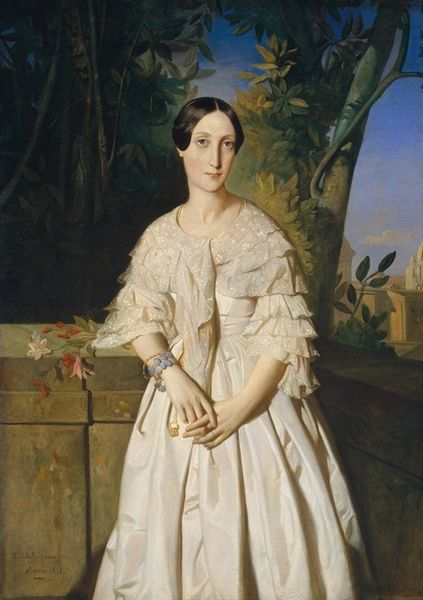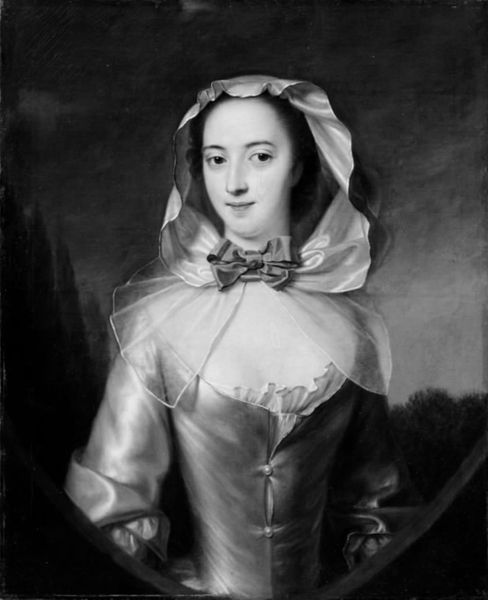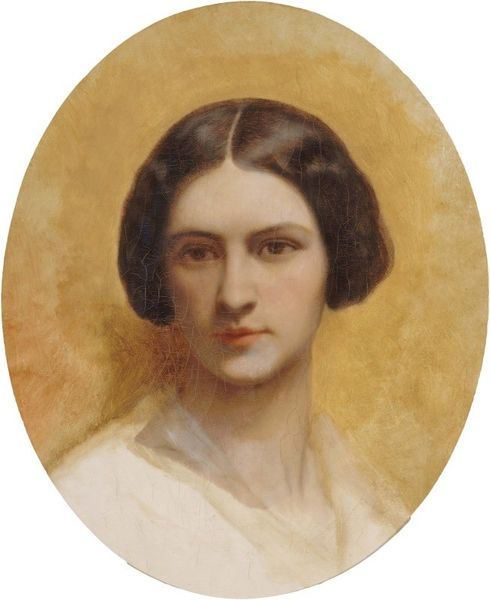
painting, oil-paint
#
portrait
#
portrait image
#
painting
#
oil-paint
#
figuration
#
romanticism
#
portrait drawing
#
facial portrait
#
lady
Copyright: Public domain
Curator: Editor: This is "Blanch Sully," an oil painting by Thomas Sully from 1839. The portrait feels very…restrained to me, almost melancholic. How do you interpret this work? Curator: Well, beyond its surface aesthetics, what resonates is how Sully's portrait encapsulates the prescribed ideals of femininity during the Romantic era. We see a representation that reinforces societal expectations, which significantly limited women’s roles. How might the limited agency of women in the 19th century be visible, perhaps even encoded, within the composition itself? Editor: You mean in her expression or posture? She doesn’t exactly seem defiant. It's interesting to consider what isn’t shown – what her life was actually like versus the image being presented. Curator: Exactly. The painting's emphasis on delicate features and a passive demeanor normalizes and perpetuates those ideals. How does this ideal serve the patriarchy? What were the cultural expectations of women in the early 19th century and how did those expectations play into male dominance? What were women expected to do, and not do? Editor: That really reframes my view of it. It’s not just a pretty picture; it’s a reflection of the power structures at play. I see now how it normalizes female passivity and silence within a patriarchal structure. I hadn't really thought of portraiture as a political act before, even if an unintentional one. Curator: It prompts questions of agency and representation – who has the power to create and define the narrative? Considering the work through a lens of gender studies makes us interrogate these very issues. What can we do today to disrupt these historical narratives? Editor: Absolutely. It challenges us to critically analyze the art we see and question the historical contexts that shaped it. This has really opened my eyes. Curator: And that's precisely where the power of art history lies – in sparking these dialogues.
Comments
No comments
Be the first to comment and join the conversation on the ultimate creative platform.
